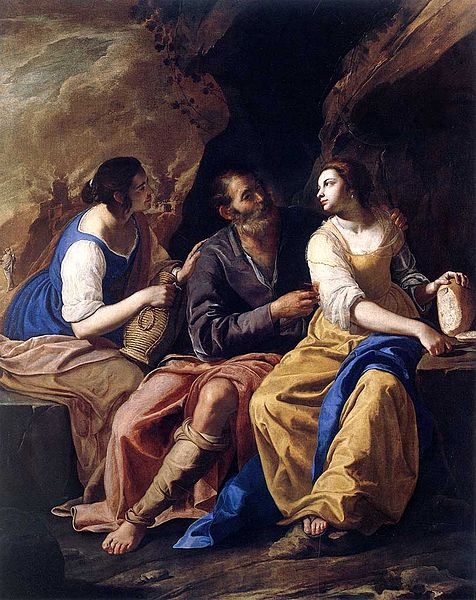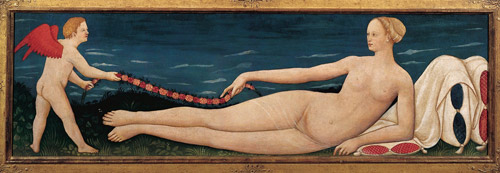Instructional Subjects
When broadly looking at Renaissance depictions of women it becomes clear that they were often instructional images. They instructed women either how behavior in a certain situation or were designed to help women achieve a specific objective.

Many paintings, specifically portraits, showed society's ideal of what a woman should strive for in character and appearance. Similar to The Courtier, and other advice texts, painting showed women as men felt they should be.
Religion was an important part of Renaissance society and therefore religious images were very common. Often religious paintings were meant to guide women in life. The Virgin Mary and female saints represented virtues that women were meant to strive towards.
Sometimes images were painted expressly with the idea of being instructive or as a form of magical thinking. For their marriage women would have a cassone, similar to a hope chest, which would store their clothing. These chests would be elaborately decorated, in some areas extremely elaborate chests would be an attempt to display wealth despite sumptuary laws. They would be decorated with paintings. Scenes from the Bible and Greek mythology would suggest how a couple should behave by showing important characteristics important to marriage. On the inside of the lid of the cassone, a bride could find a more intimate painting which would suggest how she should behave on her wedding night.

(Above) Inner Lid from a Cassone with Venus Reclining on Pillows. Florence, 1440–45. Tempera on panel; 20 x 67 in. (50.8 x 170.2 cm) without frame. Museo Privato Bellini, Florence (182)
(Above right) Lot and His Daughters c. 1635-1638. Oil on Canvas. Toledo Museum
of Art. Toledo, Ohio.